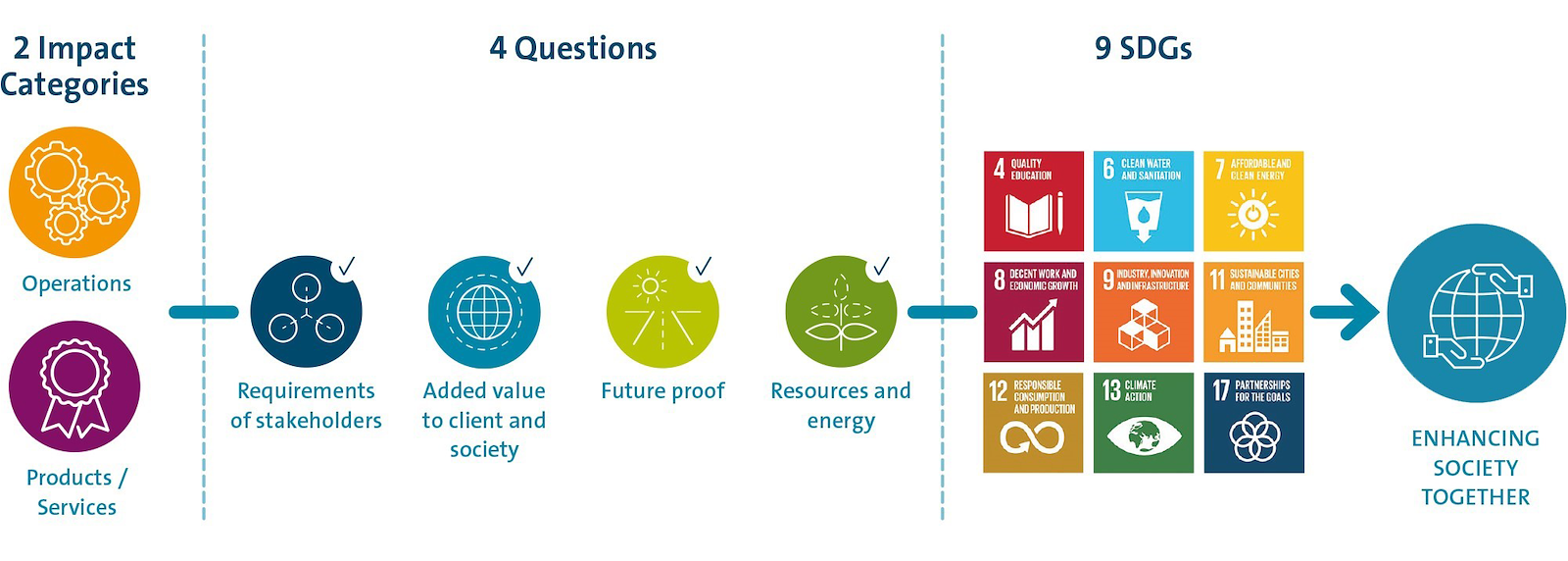Quality and Sustainability in our Products and Services
The quality and sustainability of the products and services we deliver for clients are key to our continued success and enable us to deliver on our mission. We ensure global standards and practices are integrated into our ways of working through our Integrated Management System. Certification of the system against international standards supports our commitment to quality. The full range of certifications renewed and gained in 2021 appears in our Annual Report Section Quality Management.
How we challenge our clients to make sustainable choices
We constantly challenge ourselves and our clients to make sustainable choices and use 4 Questions in our conversations with clients and partners to help us identify where we can add value for society, limit the use of resources and minimise potential negative impact. They ensure we maintain our focus on specific SDGs and help us find solutions that meet the needs of society as well as our client.
The use of the 4 Questions provides a performance indicator on our sustainability commitment and, during the year, our 4 Questions were used in 85.7% of our light and full projects (excl. basis projects). The questions are:
-
Does the output meet the requirements of most stakeholders involved?
-
Does the output serve added value for the client and society as a whole?
-
Is the result lasting, thus is it future proof?
-
Can we meet the client’s demand while minimising the use of natural resources (including clean water) and energy?
The use of the 4 Questions helps quantify how we are implementing sustainability and has been effective at encouraging change within projects we undertake. However, we are working on a new measurement system which captures our impact in more detail across a wider range of specific measures.
Client satisfaction
Client satisfaction is an important indicator of our performance as a company. We measure this in various ways, including via satisfaction surveys on completion of a project. In the survey, clients provide us with a rating score for Enhancing Society Together. The majority of our clients rates us good or very good on the delivery of our brand promise Enhancing Society Together. This results in an average Enhancing Society Together score of 7.6 on a scale from from 0 to 10.
Year | Enhancing Society Together (EST) Score | # EST question answered |
|---|---|---|
2017 | 7.2 | 541 |
2018 | 7.3 | 827 |
2019 | 7.4 | 881 |
2020 | 7.5 | 661 |
2021 | 7.6 | 701 |
overall | 7.4 | 3750 |
More Client Reviews
A selection of the comments that are provided by our clients appears in our Annual Report section Our stakeholders and how we engage. Additional examples appear below:
“Working with Royal HaskoningDHV is like having a partner on your project.”
City Of Parramatta Council (Australia)
“As per its motto 'Enhancing Society Together' Royal HaskoningDHV was found true to its motto especially in the field of water /waste water. The company has a sufficient and competent work force required for supervision and consultancy in the field of water /waste water.”
Stup consultants Pvt Ltd (India)
”With Royal HaskoningDHV you have a partner on board who understands that it is not only about good expertise in the content, but also in line with the culture of your company.”
Lamb Weston Meijer VOF (Netherlands)
“In my experience the advisor of Royal HaskoningDHV is understanding towards change processes, as well as progressive and flexible in driving change.”
Brabant water N.V. (Netherlands)
“Royal HaskoningDHV provided a very capable and competent team who successfully delivered high quality and meaningful results, which were easily interpreted and understood within expected time-frames.”
Bundaberg Sugar LTD. (Australia)
“The contribution made by Royal HaskoningDHV in its role as Independent Engineer to our project has exceeded all expectations to the point that it has become a key player in finding pathways for the project to progress.”
AMWC - Al Manara Water Company Limited (Sudan)
“With the Royal HaskoningDHV team we found a competent partner that guided us through our project with knowledge, competence but also partnership. We would definitely pick Royal HaskoningDHV again for any upcoming project.”
Saitex Fabrics Dong Nai Co. Ltd (Vietnam)
“Presenting the technical information about the design to the stakeholders was excellent. Often the stakeholders are not technically minded and the Royal HaskoningDHV team bridged that gap very well.”
Ho Tram Project Company Ltd. (Vietnam)
“The team from Royal HaskoningDHV has shown considerable personal and corporate commitment in supporting the Sizewell C project. The standard of technical work has been excellent, as has the willingness to 'roll up sleeves', collaborate and solve some complex problems to deliver a solution that balances the needs of the client and numerous stakeholders.”
NNB Generation Company SZC Ltd. (United Kingdom)
“Royal HaskoningDHV have been a pleasure to work with. Compared to other design and engineering companies, they really understand how to meet the travel needs of cyclists and pedestrians with other road users. They bring outstanding experience and technical skills as well as excellence in communication and collaboration.”
Bike safe West Oxfordshire Limited Oxfordshire (United Kingdom)
"Royal HaskoningDHV provides value for money and make sure projects get delivered within allocated time threshold regardless of the magnitude of the challenges encountered during the execution of the project. I am in awe of the professionalism shown by their senior technical staff just to make the project get delivered. They even volunteered to continue working on the project after budget exhaustion and end of the contract duration. This is rare and cannot go unappreciated."
NMBM (Southern Africa)
Example projects
For a complete overview of all the project examples in this report (Annual Report and CSR Report), check the overview of project examples per SDG
Working with nature to improve climate resilience at Kansai International Airport
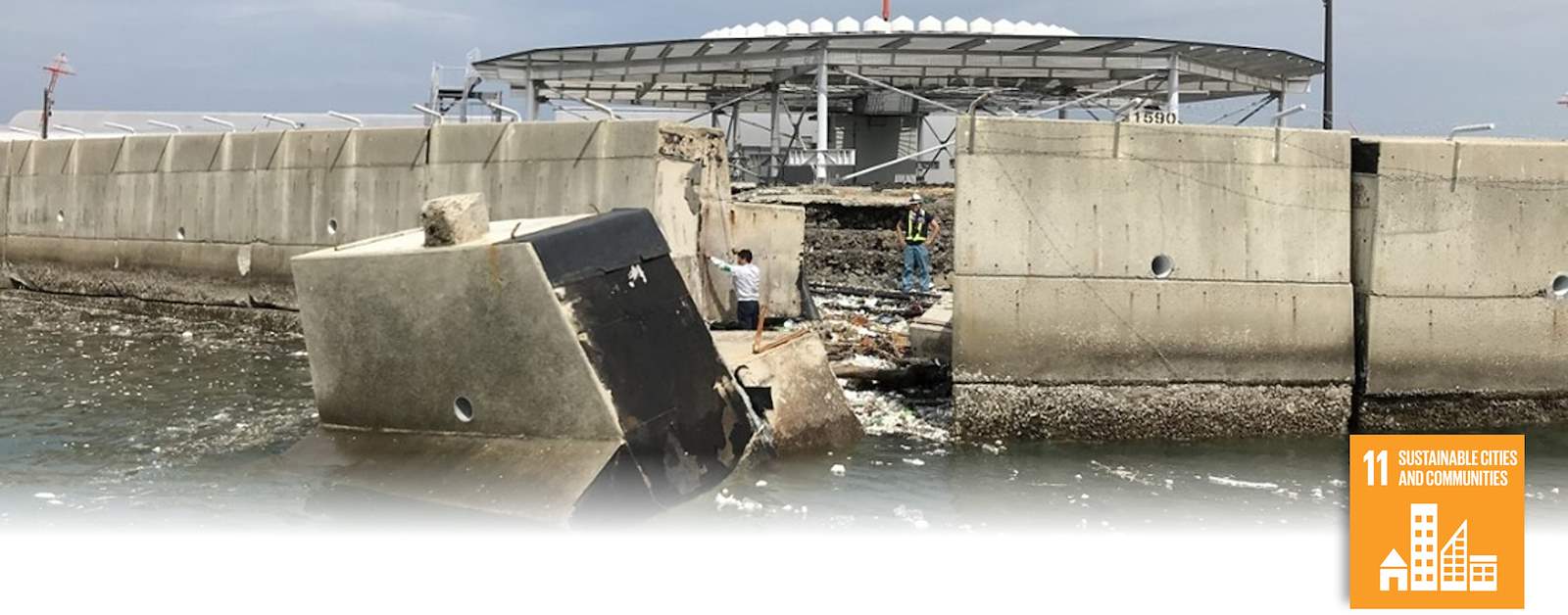
Damage after a typhoon at Kansai International Airport in Japan.
The devastation and flooding caused by a powerful typhoon at Kansai International Airport in Japan resulted in all operations being halted for two weeks. The economic impact on the region was estimated to be around 500 million dollars. With extreme climate events becoming more frequent in the country, the airport needed to mitigate future impacts and reduce downtime.
Our solution was guided by the fact that full flood prevention could not be achieved due to the extreme nature of these climate events. We needed to build with nature to ensure that future disruption would however be minimised. We explored adaptation and mitigation measures using detailed simulations of what happened when the typhoon struck. One measure we identified was to use a canal running between the north and south areas of the airport to provide a catchment area for flood water.
The impact of our proposed solutions will reduce climate-related downtime from two weeks to two days and increase the protection of critical assets and priority areas. Through our work, we engaged with stakeholders to raise understanding of flood scenarios which will improve safety of passengers and staff during extreme climate events.
Optimisation strategy avoids Day Zero without new reservoirs
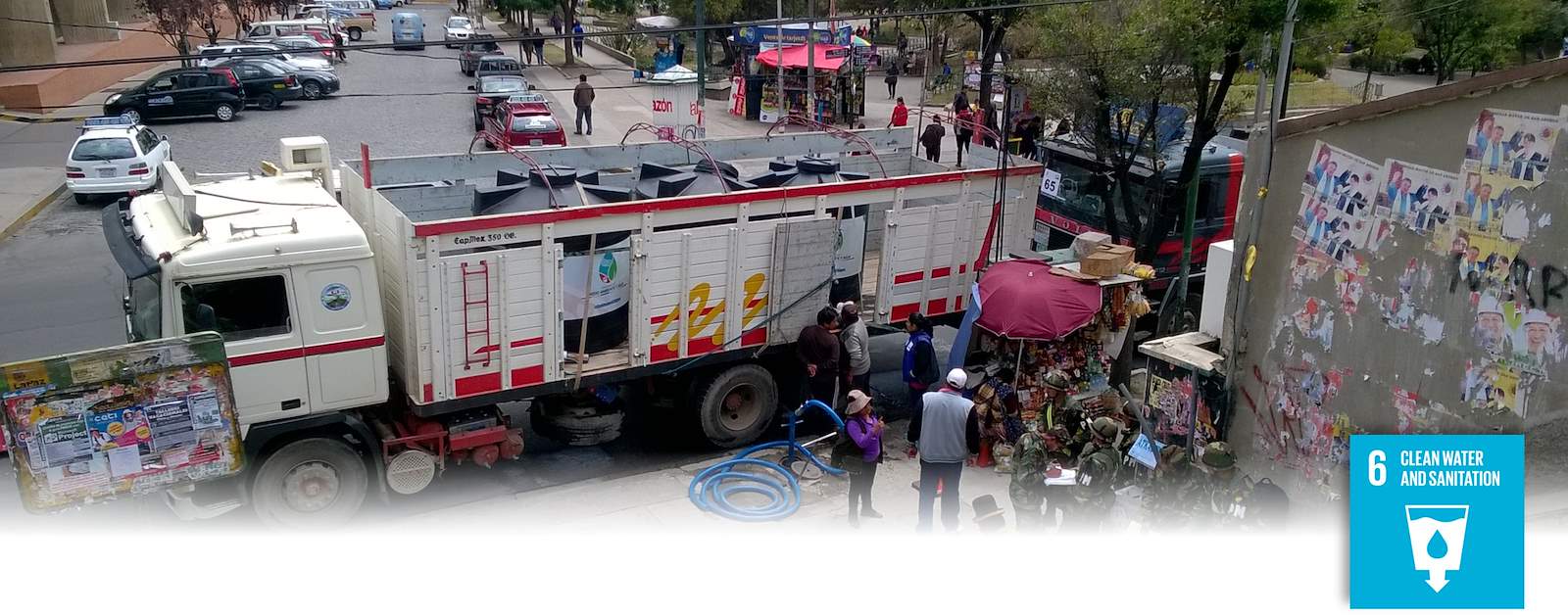
Avoiding Day Zero in La Paz, Bolivia
Changes in weather patterns connected to climate change are bringing periods of sustained drought which put the availability of public water at threat. For example, in 2016 the capital of Bolivia, La Paz, experienced Day Zero when drinking water reserves were almost depleted due to extreme drought. Schools were closed and drinking water brought in by army trucks. A national state of emergency was declared. However building new dams and reservoirs to expand supply creates significant impact on ecosystems, social impact, significant investments and long implementation durations. Is there another way?
We developed a solution which optimises the existing network of 25 dams and reservoirs and avoids the need to expand the current water system. We have created a semi-online monitoring network powered by solar panels to replace in-person reporting from across the Andes. Data from this monitoring system is linked via smart software to an advanced hydrological model that we have built. The model uses this data as well as weather forecast information to generate possible scenarios. It can provide future Day Zero predictions with around 18 months’ notice, providing enough time to prepare adaptive measures and mitigations.
Operational optimisations reduce spillage and evaporation equivalent to introducing a new dam and reservoir. The system also reduces contamination and chemicals needed to purify the drinking water. The impact of these optimisations mean the investments will have paid for themselves within four years. Furthermore, the water system operations will be more robust, preventing supply interruptions to the city of 2.2 million people, and reducing chances of Day Zero from once every four years to once every 10 years. Even when shortages are predicted, sufficient time is provided to allow adaptive measures to be introduced.
Biodiversity boost from zero carbon energy system
Our planet is facing threats on many fronts – from climate change to the decline in the natural environment and water quality. A nature-based solution for extracting renewable energy could bring benefits across multiple areas.
We are evaluating a concept that combines a surface water heating system with a naturally purifying wetland in a case study for the city of Amsterdam in the Netherlands. The system, called ZOET, involves constructing canals which include areas of vegetation for wildlife. The wetland areas improve water quality by trapping sediment and removing phosphorus. They also increase the potential for extraction of thermal energy making surface water heating systems more feasible and profitable.
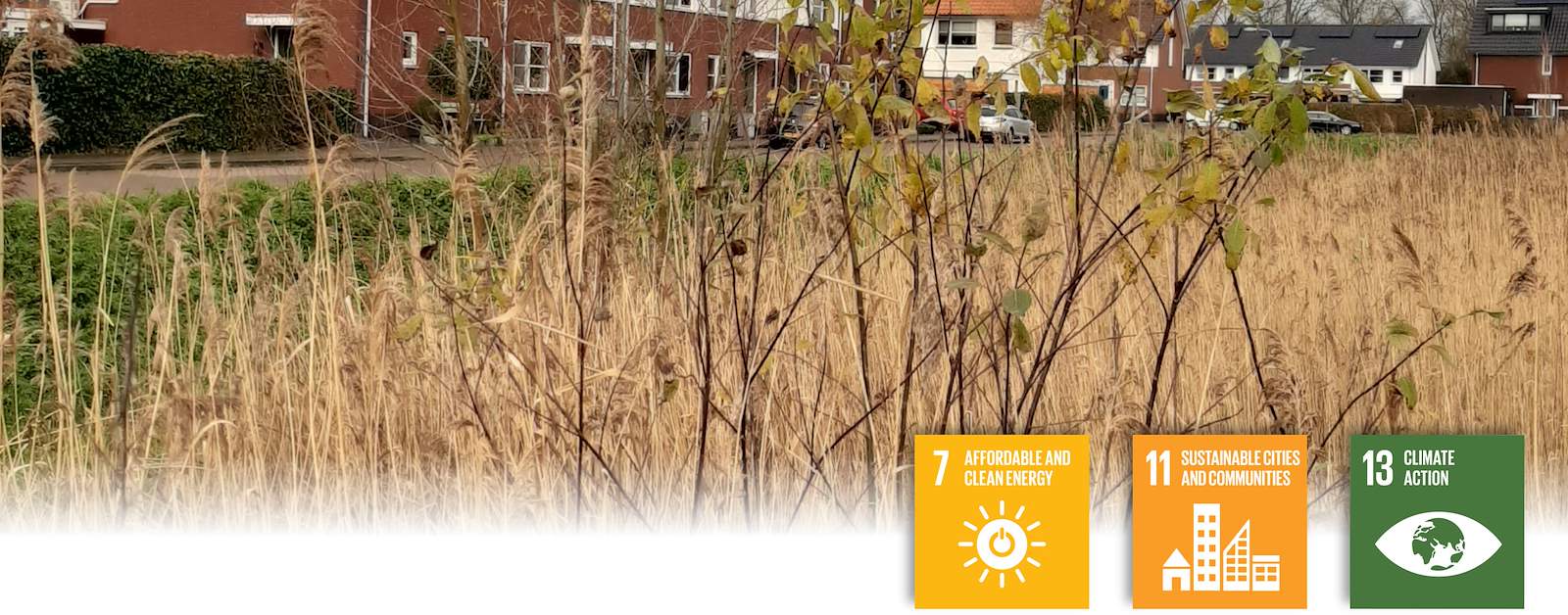
Such a system can bring many benefits for urban areas. The wetlands introduce areas of nature to increase biodiversity and improve water quality. In addition, the system provides a zero-carbon energy source to assist ambitions to reduce greenhouse gas emissions.
Roadmap starts process to build climate resilience in typhoon-struck island in the Philippines
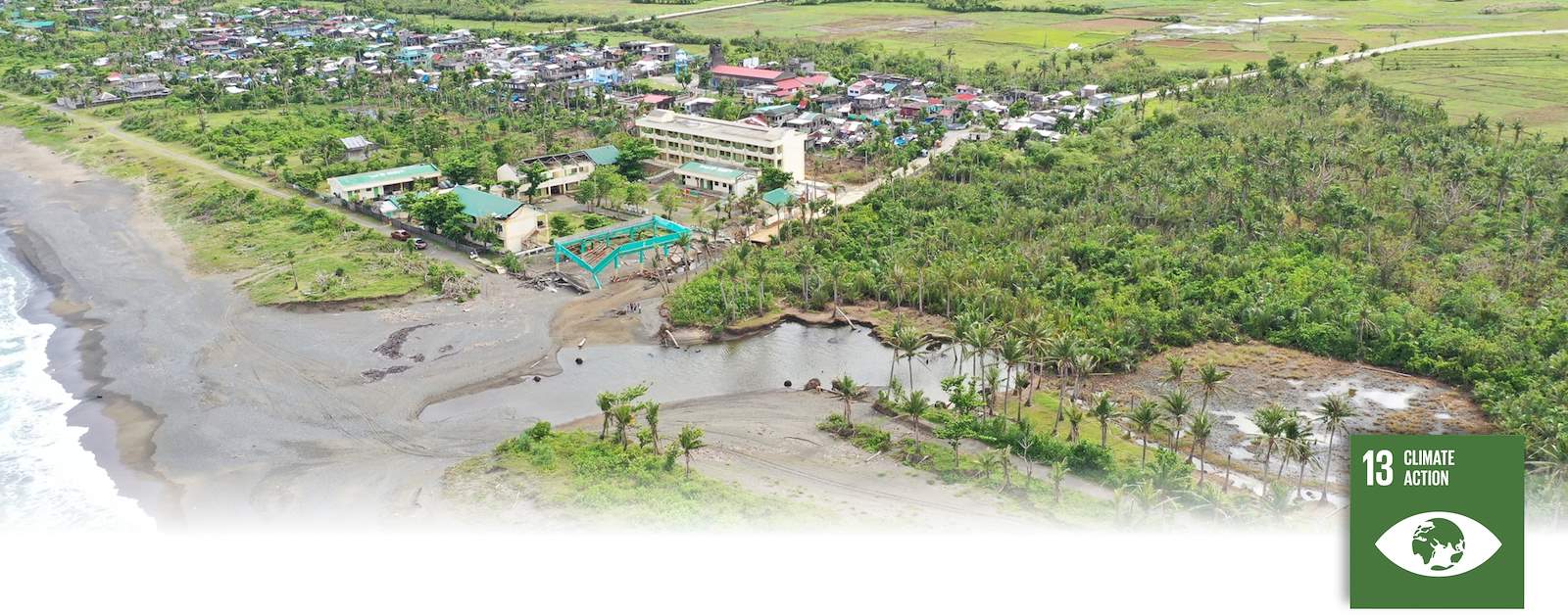
The Catanduanes Island in the Philippines
Inhabitants of the Cantanduanes Island in the Philippines are experiencing the devastating impact of climate change. In 2020, four consecutive hurricanes hit the island, including typhoon Goni – the strongest landfalling tropical typhoon on record. Death and distruction were left in its wake. Royal HaskoningDHV, as part of a Netherlands Enterprise Agency (RVO) funded and organised DRR-Team Mission, in partnership with Philippine Reclamation Authority and further support from the Netherlands Government, has developed a roadmap towards a Coastal Management Strategy. This will lay the foundation for improving Catanduanes' climate resilience and safeguarding people's lives and livelihoods.
The roadmap identified appropriate strategies and measures (structural and non-structural) to mitigate impacts of natural hazards. These take into account technical, environmental, social, financial and economic conditions as well as the increasing challenges of climate change. It provides a useful first step in planning and budgeting, while directing increased efforts towards maintaining existing infrastructure.
The next step is the masterplan which will provide timings for efficient and practical implementation. The capex and opex estimates provided in the roadmap will be useful for prioritising measures and managing expectations. To ensure long-term resilience in the face of the significant influence of climate change on the coastal communities, the masterplan needs to incorporate adaptive path planning. That’s because some mitigation measures may be effective in the short term but fail to offer sufficient protection in the longer term.
Financial sector regulations and risk addressed in high-tech solution
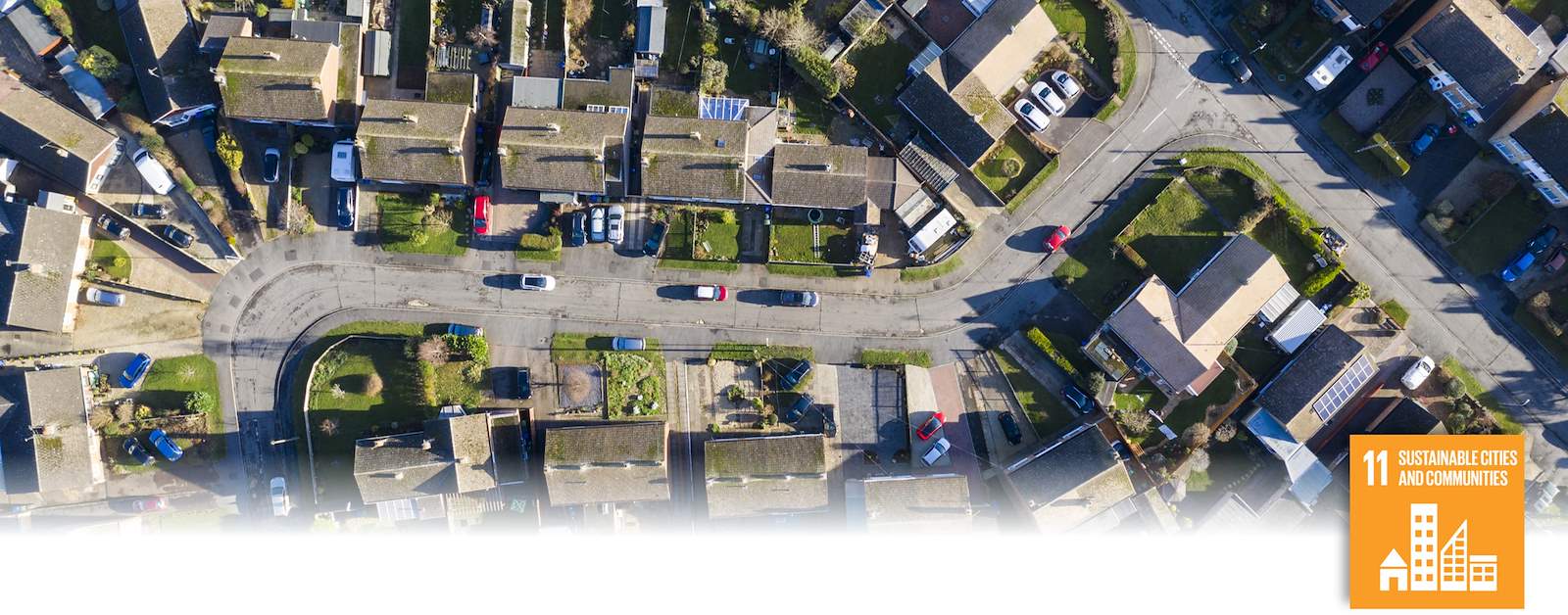
Properties and assets at risk from climate-related weather events
New legislation effective from April 2022 in the United Kingdom, and set to be introduced in Europe over the next two years, requires large companies and financial institutions to report on climate-related risks and opportunities. Banks and building societies are complying with regulatory expectations by taking steps to ensure they can provide sustainable lending in the face of a changing climate. To do so, they need to have a clear understanding of risks facing their asset portfolios.
This information is now available through a solution provided by a company of Royal HaskoningDHV, Ambiental. Ambiental’s Climate Suite provides a transparent, data-driven view of properties and assets at risk from climate-related weather events - now and in the future. It enables future risks to be quantified for any given year or across any required timeframe, so assessments can be based on the exact duration of an investment, mortgage, or insurance policy.
It results in safer, more sustainable investments and simplified compliance with the new mandatory financial reporting regulations. For example, the oldest building society in the world - the Scottish Building Society - has assessed the current level of risk to more than £ 400 million (€480m) in mortgage investments using Ambiental’s flood risk insights.
New port terminal benefits local economy
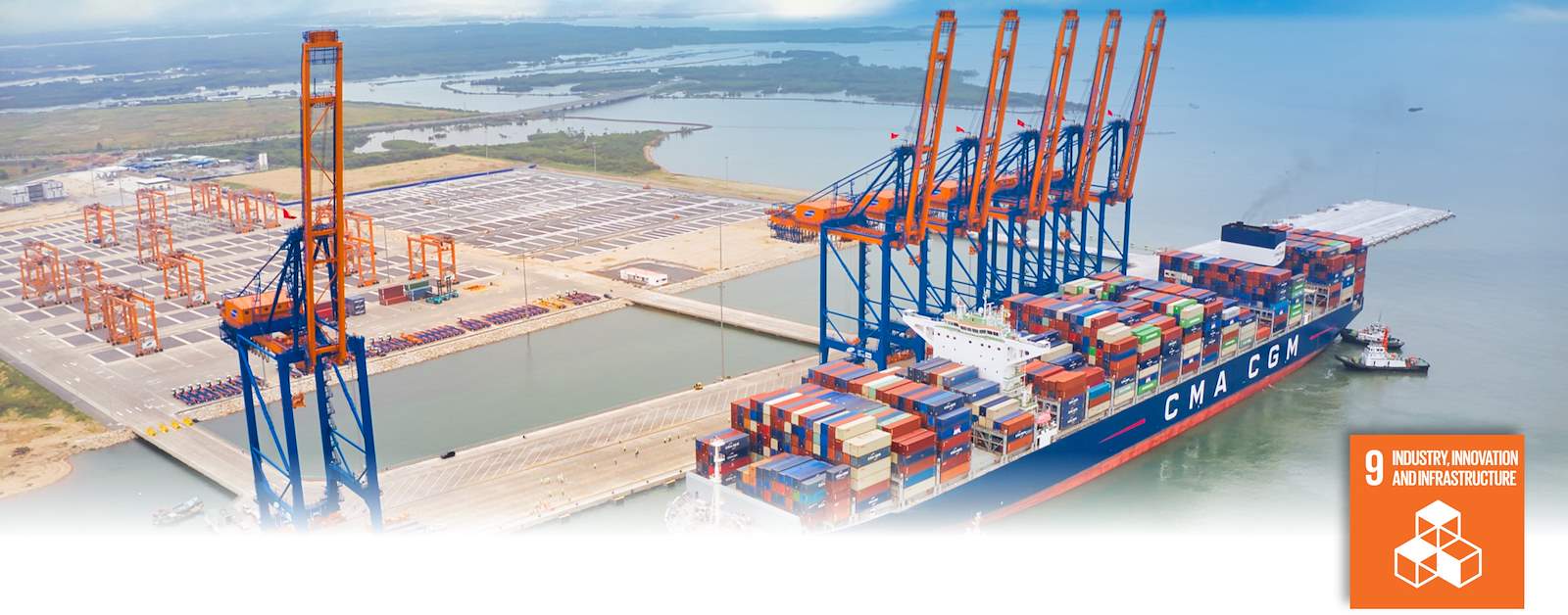
New container terminal brings positive impact for the local society by creating new jobs, boosting the economy and meeting international safety standards.
Major infrastructure projects can bring significant positive impact for the local society, creating new jobs and boosting the economy. However, a common challenge is to keep control of costs while ensuring the development will meet future requirements as well as international safety standards. The construction of a major new container terminal constructed in Vietnam was further complicated by incorporating earlier work that had been carried out nearly a decade previously.
Our solution updated the original design to provide a jetty which can accommodate larger future vessels. We maximised the use of precast concrete elements which significantly improved the quality, safety, speed and ease of construction. Further cost savings were achieved during the tender process in partnership with our client Gemalink.
The impact was to reduce overall project expenditure by 10% compared to the original design from 2010. We helped the local contractor improve working practices which raised health and safety performance on this project and will benefit the contractor’s future activities. The success of our approach to design, engineering, tendering and construction project management services was recognised in the 2021 Award of Merit in the ENR Global Best Projects Competition, in the Ports/Airports category.
